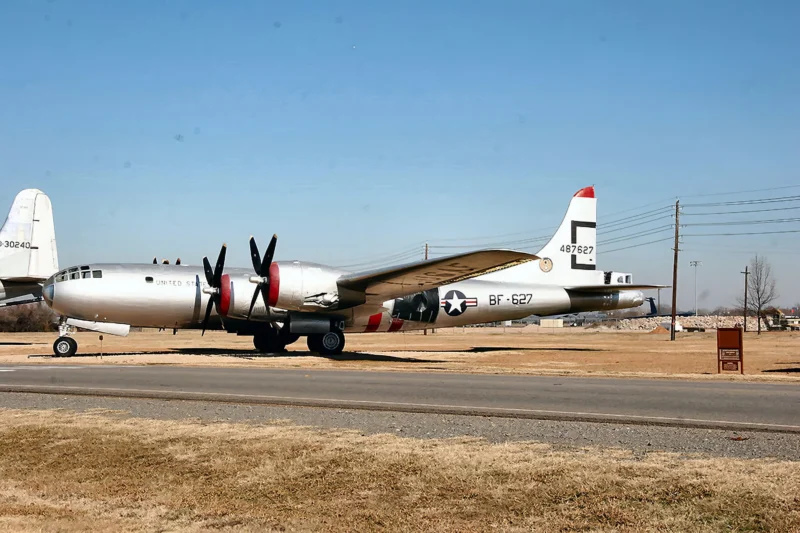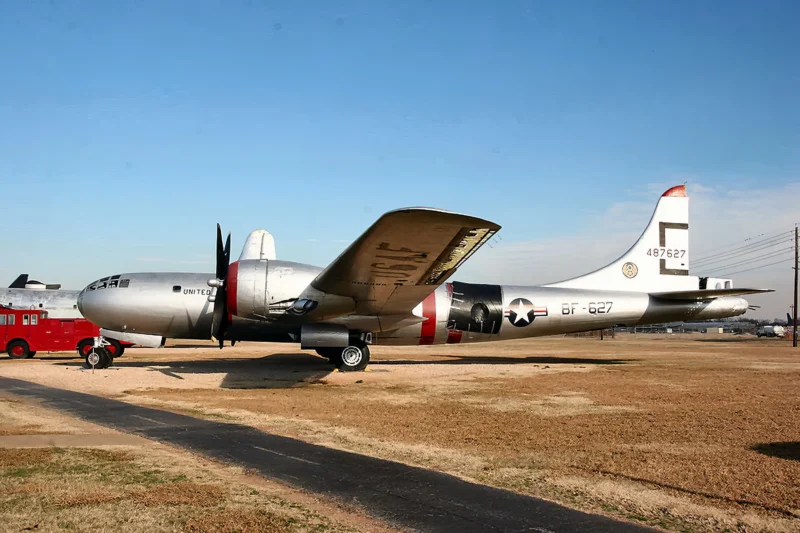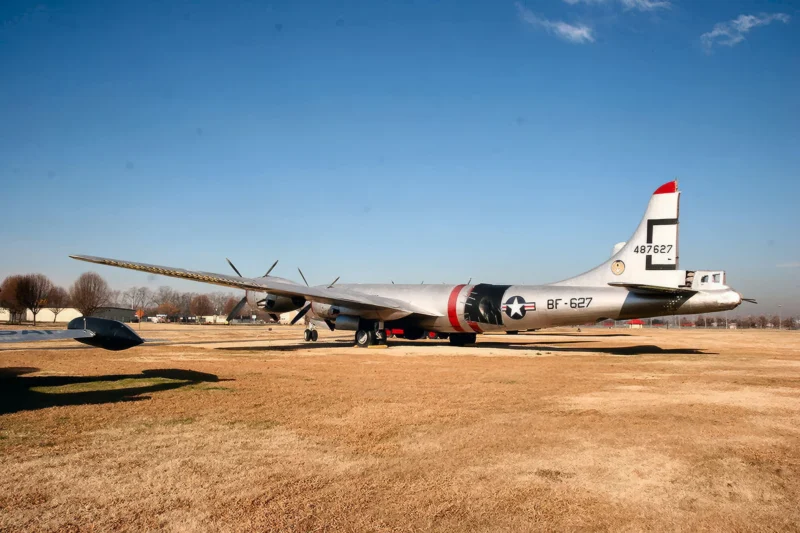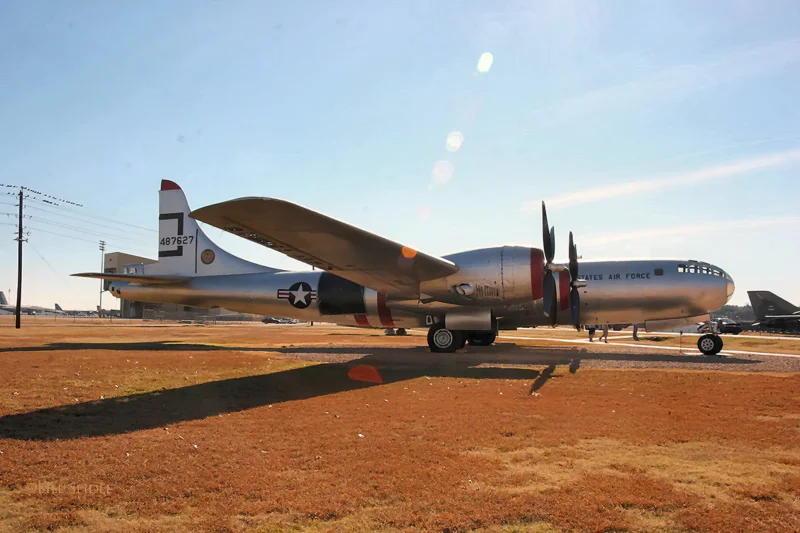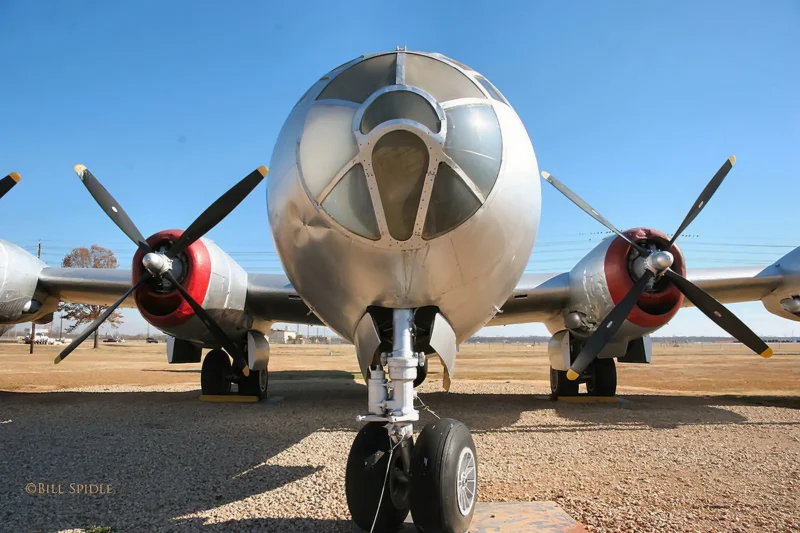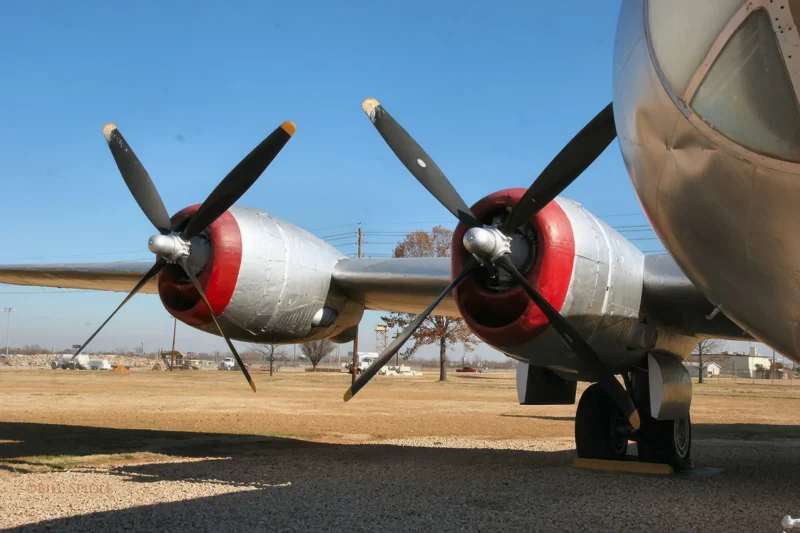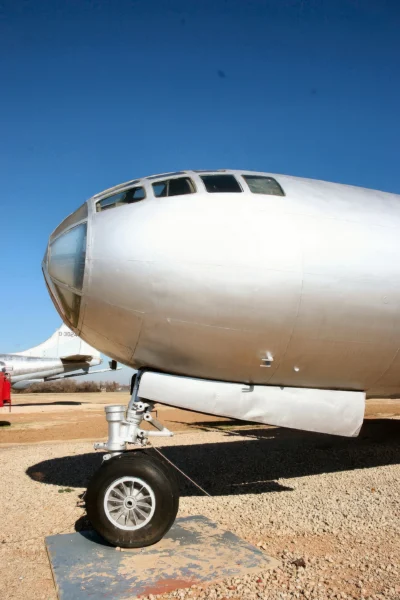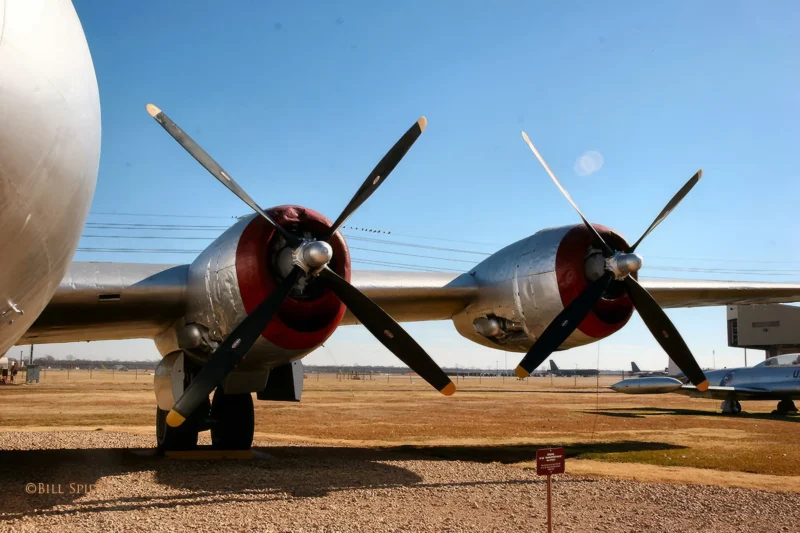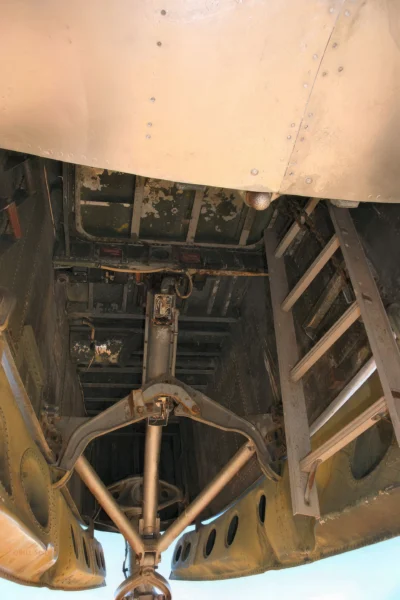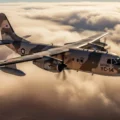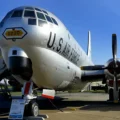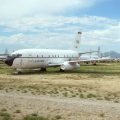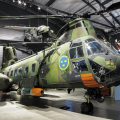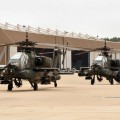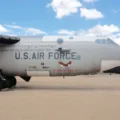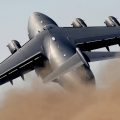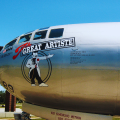
B-29 Super Fortress | |
|---|---|
| Country | USA |
| Role | Strategic bomber, Heavy bomber |
| First flight | 21 September 1942 |
| Built | 3970 |
The Boeing B-29 Superfortress is a four-engine propeller-driven heavy bomber designed by Boeing and flown primarily by the United States during World War II and the Korean War. Named in allusion to its predecessor, the B-17 Flying Fortress, the Superfortress was designed for high-altitude strategic bombing but also excelled in low-altitude night incendiary bombing. B-29s also dropped the atomic bombs on Hiroshima and Nagasaki which led to the end of World War II.
Source: B-29 Super Fortress on Wikipedia
| B-29 Super Fortress | |
|---|---|
| Photographer | Unknow |
| Localisation | Unknow |
| Photos | 30 |
See also:
| Boeing B-29 Superfortress Walk Around | |
|---|---|
| Photographer | Unknow |
| Localisation | Unknow |
| Photos | 15 |
| B-29A (44-87779) Superfortress Walk Around | |
|---|---|
| Photographer | Dave Kitchel |
| Localisation | Unknow |
| Photos | 69 |
See also:
| B-29A Superfortress Walk Around | |
|---|---|
| Photographer | Unknow |
| Localisation | Unknow |
| Photos | 61 |
The Boeing B-29 Superfortress was an American four-engine heavy bomber and one of the most advanced and influential aircraft of World War II. It was designed specifically for the vast distances and high altitudes required for the strategic bombing campaign against the Japanese mainland in the Pacific Theater.
Groundbreaking Technological Features
The B-29 was a leap forward in aviation design, incorporating several technologies new to operational bombers:
- Pressurized Cabins: For the first time in a production Allied bomber, the forward and rear crew compartments were pressurized, connected by a long tunnel. This allowed the crew to operate at high altitudes (above 30,000 feet) without constantly wearing oxygen masks, greatly increasing crew comfort and endurance on the extremely long missions over the Pacific.
- Central Fire Control System: It featured an analog computer-controlled system for its defensive armament. Gunners used interconnected sighting stations to remotely aim and fire the aircraft’s turrets. This allowed one gunner to control multiple turrets, increasing accuracy and effectiveness while keeping the crew inside the pressurized fuselage.
- High-Altitude Performance: Capable of flying at altitudes up to 31,850 feet and speeds of up to 350 mph, the B-29 could operate above the effective reach and speed of most contemporary Japanese fighter aircraft.
- Defensive Armament: Initially, the aircraft mounted four remotely controlled turrets, typically armed with two 0.50-inch Browning M2 machine guns each, plus a tail position that also had a 20 mm cannon (often removed later).
Role in World War II
| Key Aspect | Details |
|---|---|
| Primary Theater | The Pacific Theater of Operations. It was too late and too specialized for the European War. |
| Strategic Role | Strategic Heavy Bomber. It was designed to launch massive bombing raids from distant bases, initially from China (via the Hump) and later from the Mariana Islands (like Tinian and Guam). |
| Bombing Campaigns |
|
| Historical Significance | The B-29 “Silverplate” variant (specifically the Enola Gay and Bockscar) was the only aircraft type to drop nuclear weapons in combat, striking Hiroshima and Nagasaki in August 1945, which hastened the end of the war. |
| Cost | The B-29 program was the most expensive of the entire war, exceeding the cost of the Manhattan Project. |
The B-29 Superfortress cemented its place in history not just as an impressive technological achievement, but as the machine that delivered the final, decisive blow of World War II. It remained in service in various roles through the 1950s.
Views : 3487
